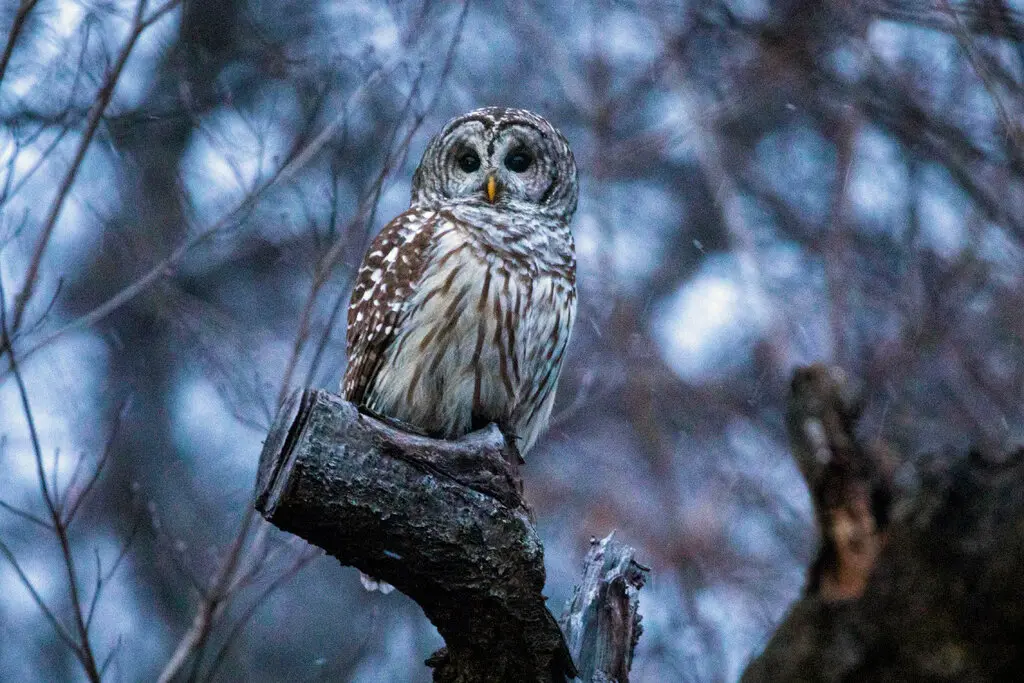While reading “What an Owl Knows,” by the science writer Jennifer Ackerman, I was reminded that my daughter once received a gift of a winter jacket festooned with colorful owls. At the time I thought of the coat as merely cute, but it turns out that the very existence of such merchandise reflects certain cultural assumptions about the birds: namely, that they are salutary and good.
Owls can also carry more negative connotations, depending on the context. In some places they are associated with wisdom and prophecy (the goddess Athena and her owl); in others they are considered portents of bad luck, illness and even death. As it happens, the existence of owl-inspired merchandise is a useful indicator of human-owl relations in a given society. Ackerman, who has written several other books about birds, recounts a surprising story of rapid cultural transformation in the Serbian town of Kikinda, where owls were at one time considered such an ominous sign that people would harass or shoot them. Over the course of a decade, an educational campaign persuaded the townspeople otherwise. A tree full of owls is now something to show off instead of cut down, and each November, schoolchildren write poems and artwork dedicated to the birds.
Perhaps one of the main reasons owls have been burdened with so many cultural stereotypes is that they are so distinctive — even a young child can identify their shape — while also being enduringly mysterious. In “What an Owl Knows,” Ackerman explains that the “new science” she refers to in her subtitle has required technological innovations: cameras, drones, DNA analysis, satellite transmitters. We can now see owls inside their nests or migrating over the Great Lakes. But even the most sophisticated gear can do only so much. Getting physically close to owls presents some stubborn challenges. Researchers wanting to protect their heads from an owl swooping down cannot wear a hard-hat helmet, because that could kill a bird on impact. A researcher who got whacked by a big female protecting her nest recalls feeling blood streaming from the back of his skull and pulling out a piece of talon.
“Finding owls is hard,” a naturalist and photographer tells Ackerman, stating a simple truth from which many complications follow. Another researcher, who has encountered hundreds of owls, says, “It was still magic to me every time we found one, because they’re so well camouflaged and so shy.” There are some 260 species of owls spread across every continent except Antarctica. They were initially thought to be related to other birds of prey, like falcons or hawks, and, later, to nocturnal birds, like nightjars. But it turns out that the owl’s closest relatives are a group of birds that are active in the daytime, including toucans and woodpeckers.
The “hoot” of an owl will vary wildly. There is the whOOo of the long-whiskered owlet and the humanlike scream of the fearful owl. Then there is the barking owl’s woof woof. There are even differences within species. Burrowing owls in Oregon call with a monotone coo-coo, whereas the calls of burrowing owls in Maringá, Brazil, sound more like coo-kyeeia.

But a lack of sound is also characteristic of owls, whose flight is often so quiet that it’s below the threshold of human hearing. Feathers tend to be noisy, yet an owl’s wings are large relative to its body, so it doesn’t flap desperately; it swoops and glides. Owls also tend to have more feathers than other birds — usually around their faces, which may have something to do with their incredible hearing. Ackerman introduces us to Percy, a great gray owl who can change the shape of his “facial disk” by using the muscles at the base of his feathers, directing the sound that hits the disk into his ear cavities.
I recount these facts with a mix of astonishment and pleasure because Ackerman is a warm and companionable guide, so enthusiastic about her subject that I suspect even the avian-indifferent will be charmed by her encounters with owls and the dedicated people who study them. Each species seems like a marvel, but certain owls are so special that her book is peppered with superlatives. The Eurasian eagle owl is “the most powerful hunter of all owls” (though not to be mistaken for the powerful owl, which will eat as many as 250 to 350 possums a year). The Northern saw-whet is, she says, “arguably the world’s most adorable owl,” with its heart-shaped face and tiny, rounded form. Blakiston’s fish owl is “the world’s biggest owl.” (In the 2020 book “Owls of the Eastern Ice,” the biologist Jonathan Slaght described the first fish owl he ever saw as a “defiant, floppy goblin.”)
The photos in Ackerman’s book are fascinating. In addition to predictable images of various owls looking stately and majestic with their penetrating stares, Ackerman includes some candid shots. A great horned owl after the rain looks downcast and scraggly. We also see a burrowing owl regurgitating a pellet of indigestible food.
The biggest threat to owl populations worldwide, Ackerman says, is the loss of native habitat. Because technology has allowed us to learn a lot more about owls, there is bitter irony in the fact that technology has also helped to destroy the places where they live and has killed owls by contaminating the food chain. In 2021, a barred owl named Barry — who had been dazzling visitors in Central Park — collided with a maintenance vehicle, possibly impaired by the enormous amount of rat poison in her system. More recently, New Yorkers have been both awed by and worried for Flaco, a Eurasian eagle owl who escaped from the Central Park Zoo earlier this year. Disappearing forests mean disappearing hollows for nesting. Warming temperatures can reduce the availability of prey.
Our effect on other animals has always been double-edged, characterized by both decimation and conservation. Ackerman counsels us to “be courteous and respectful.” But that doesn’t necessarily mean reluctant and passive. As one biologist puts it to Ackerman, “We have to work together to save every living thing.”
Source: The New York Times
















